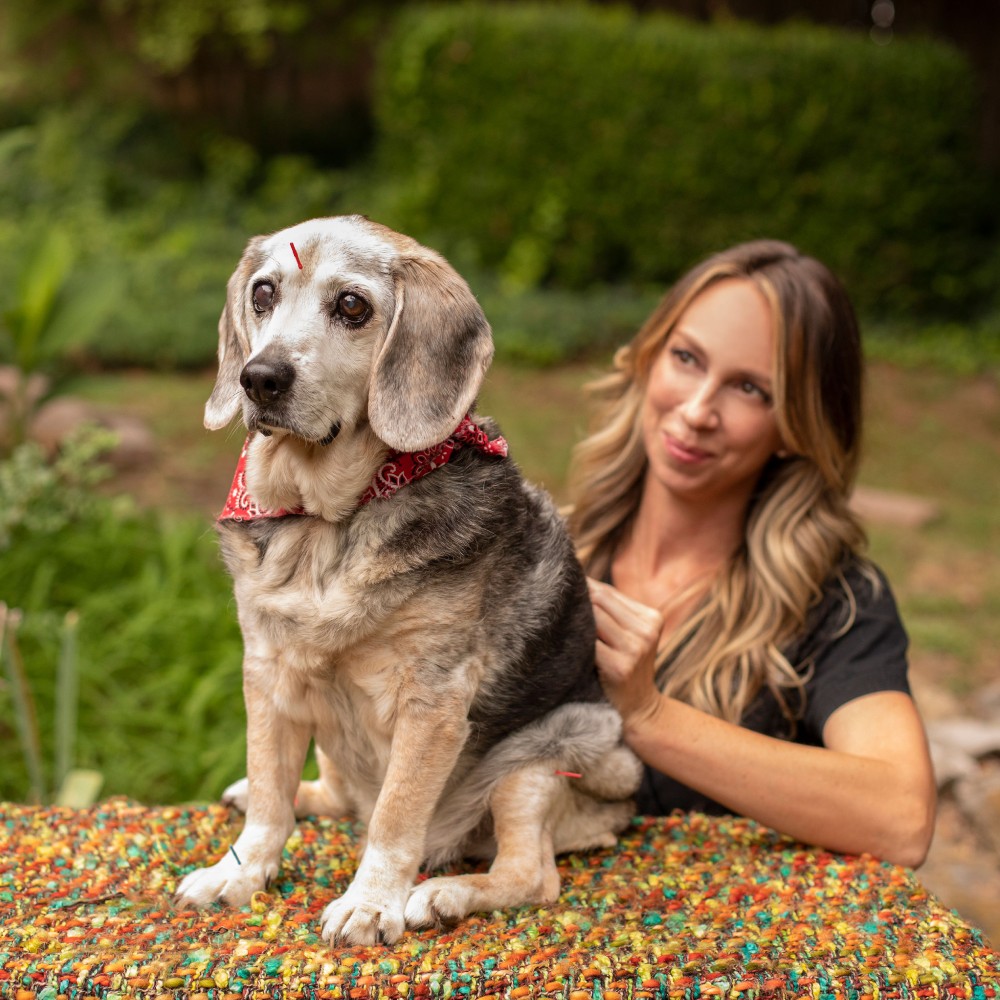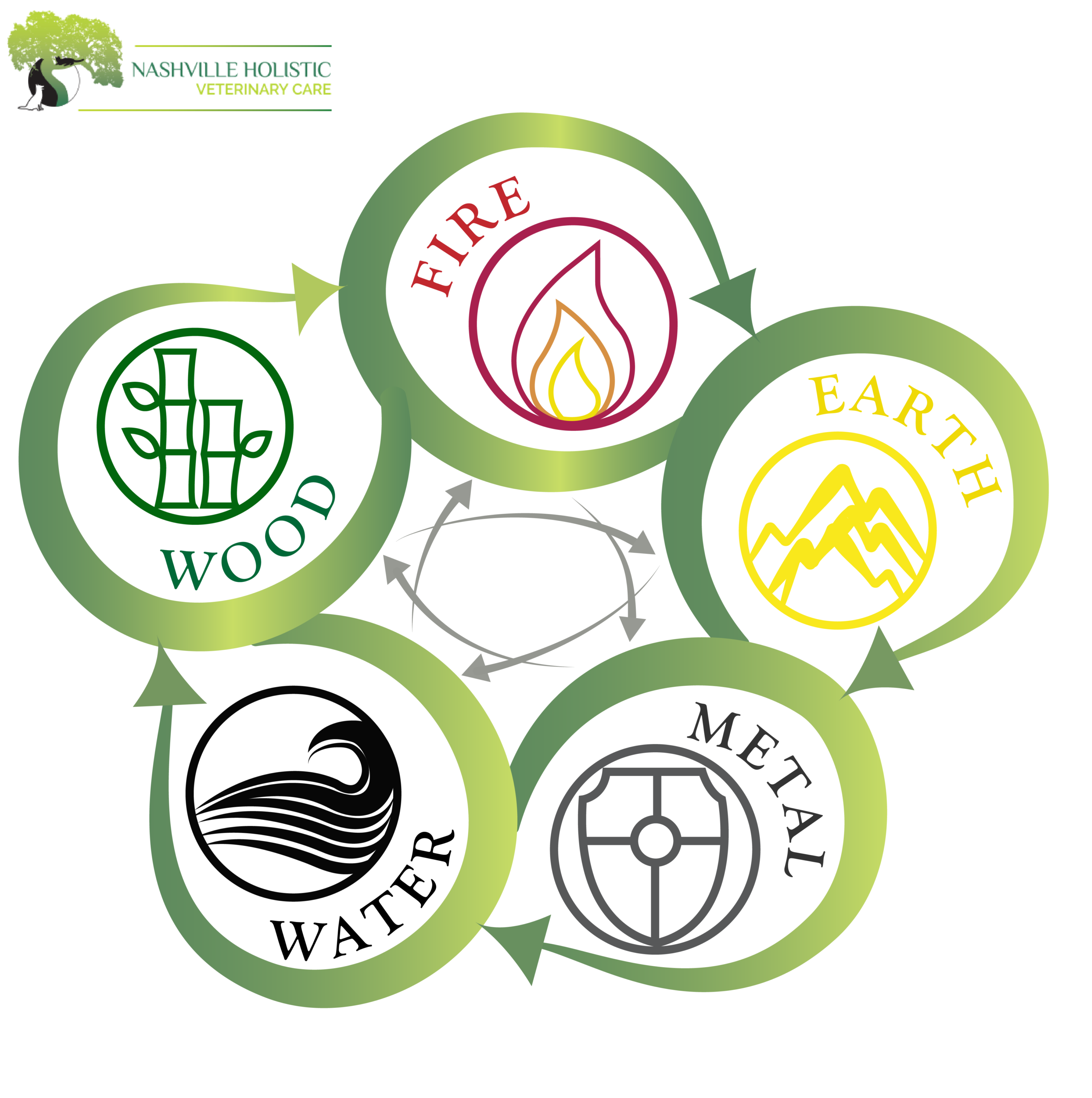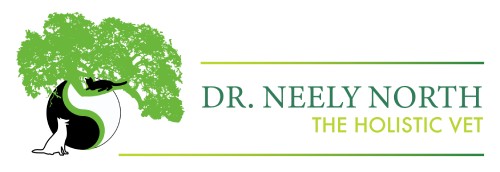Pet Traditional Chinese Veterinary Medicine
TCVM (Traditional Chinese Veterinary Medicine) is a practice that involves the 5 Elements theory. Without getting into this too much, there is a way that each element is represented in the body of every being, and keeping them in balance is health.


Traditional Chinese Veterinary Medicine
When one’s pet experiences an imbalance in their energy, disease often follows. In the realm of traditional medicine, the approach typically follows a linear path: if there’s inflammation, it’s countered with anti-inflammatory measures; if it’s a bacterial infection, the solution is anti-bacterial treatments. Such approaches remain integral in the practice of integrative medicine. However, through the incorporation of Traditional Chinese Veterinary Medicine (TCVM), a deeper understanding emerges, enabling the practitioner to address the root cause of the ailment. Restoring the body’s equilibrium becomes paramount, reducing the likelihood of disease.
Consider the case of Woody, a vigilant Shih Tzu dedicated to safeguarding his family and yard. Over the past year, he has endured six ear infections and exhibited increased irritability toward other dogs, often provoking confrontations he cannot conclude. Recent lab work conducted by his conventional veterinarian revealed slightly elevated liver enzymes, all suggestive of an imbalance within the wood element. In the past, when practicing as a traditional vet, the course of action for pets like Woody typically involved interventions like the Hills Z/d diet, numerous ear medications, and possibly long-term treatments such as Cytopoint or Apoquel.
However, the integration of TCVM into the practice has enabled a more holistic approach. Many dogs, including Woody, have been gradually liberated from these medications as their bodies regain equilibrium through a combination of acupuncture, food therapy, and Chinese herbal treatments. In this particular case, the focus would be on identifying and addressing the precise TCVM patterns underpinning Woody’s chronic issues. This comprehensive treatment plan would likely encompass acupuncture sessions, the strategic use of Chinese herbs, and dietary adjustments. As time progresses, the goal would be to gradually wean Woody off cytopoint or apoquel, allowing him to achieve a healthier, more balanced state.
Wood
The elements work in a circle; everything is connected. If the circle has a starting place, it’s the wood element. It represents youth, the beginning, a seedling, etc.
Season: Spring
Color: Green
Sound: Shout/ yell
Secretions: tears
Sensory organs: Eyes
Body type: athletic and strong
Area of tongue: sides
Imbalance emotion: Anger, frustration, irritation
Time of day: 11-1 am Gallbladder, 1-3 am Liver
Body Action: spasms/ tantrums
Ages/ season of life: Youth, prepubescent
Taste: Sour Foods that help balance: Green food, sour food ex. Collards, Spirulina, wheatgrass
Organs: Liver and Gallbladder; Tendons and ligaments
Diseases associated: Gallbladder or liver disease, tendon / ligament injuries (think cruciate ligament injuries in an athletic animal or person)
Earth
This is the element of your typical slightly overweight, very sweet, would never growl, etc. type of golden or Labrador retriever. An example of an imbalance with this element is a 7-year-old yellow lab presented for chronic intermittent vomiting and diarrhea. Occasionally, there is even a loss of appetite when this happens. They have been feeding a low-fat Rx diet, but the issue is not completely resolved. In addition, now he’s starting to develop a lot of lipomas. This is an imbalance in the earth element – he would identify the patterns by looking at the tongue and the pulses, asking lots of questions, then treating the underlying pattern—animals with these issues to great on human-grade whole foods diets, Chinese herbs, and acupuncture.
Season: late summer
Color: Yellow
Sound: singing
Secretions: Saliva
Time of day: 7 am to 11 am
Sensory organ: tongue
Foods that help balance: rice, apricot, sweet potato, beef
Body Action:
spitting/ vomiting
Organs: stomach and spleen (includes pancreas)
Area of tongue:
center
Ages/ season of life: late 20’s to 30’s – when a lot of people have a family/ are raising children
Diseases associated:
pancreatitis, stomach ulcers, stomach problems
Body Type: prone to being overweight Imbalance emotion: preoccupation/ worry Taste/flavor
Metal
Dr. North greatly appreciates the assistance of metal humans in their role as veterinary technicians. These individuals consistently exhibit qualities of dependability and organization, adhering to a consistent routine and always punctual. Among their most cherished patients are metal dogs and cats, with whom they establish trust and rapport. Once this bond is established, the animals understand the process: acupuncture administered by the doctor, followed by their own well-behaved cooperation, culminating in a successful session every time. This predictable pattern is a source of delight for the Dr. North.
A noteworthy observation is that the lung, an organ associated with the metal element and grief, exhibits heightened activity between 3 to 5 am. Dr. North often experiences moments of waking during this period when grappling with intense grief. Another time frame linked to the metal element is between 5 to 7 am, known as the Large Intestine time. Many of the doctor’s patients exhibit imbalances in this area, often motivating their owners to rise at 5 am for a bowel movement. One illustrative case involves a friendly but reserved gray cat suffering from chronic asthma that worsens in the fall, accompanied by a slightly flaky coat. Such cats respond exceptionally well to Traditional Chinese Veterinary Medicine (TCVM) treatment, demonstrating the effectiveness of this approach in addressing metal element imbalances.
Sound: weeping
Color: white
Time of day: 3 am to 7 am
Body Type: normal, average
Imbalance emotion: Grief and sadness
Season: Fall/ autumn (dry weather)
Organs: Lung and Large Intestine
Diseases associated: Constipation, bronchitis/ asthma
Ages/ season of life: Retirement age / empty nest
Area of tongue: mid tip ( so the sides of the tip but not the actual sides – that is Liver/ Wood)
Taste/flavor: pungent Foods that help balance: Rice, onion (humans only!), cinnamon, cumin, pepper
Sensory organ: nose Secretions: nasal fluid (snot) – (I know I produce a lot of this when I’m grieving!)
Water
The water element represents the last phase of life before death. Picture an older cat with kidney disease who can’t seem to get warm. Or a geriatric dog with a leaky bladder… The last phase of life is when we see problems in the water element show up. It can also happen earlier in life, especially if the patient has a water constitution.
Season: Winter
Color: white
Sound: Groaning
Area of tongue: rear
Organs: kidney and bladder
Imbalance emotion: fear or terror
Time of day: 3 pm to 7 pm
Sensory organ: ears Secretions: urine
Body Type: slight or even prematurely aging
Body action: Trembling/ shivering
Ages/ season of life: last season before death
Taste/flavor: salty Foods that help balance: pork, peas, barley, kidney bean
Diseases associated: kidney disease, bladder disease, urinary incontinence, deafness
| WOOD | FIRE | EARTH | METAL | WATER |
| Dominant/ alpha | Emotional / easily excited or feelings hurt | Slow moving, balanced or serene | Aloof | Timid or Fearful (Hides with strangers)/Trembles |
| Friendly when balanced, can be aggressive/ dominant or territorial as well | Overly friendly, licking strangers, jumping on them etc. | Friendly but slow about it | Independent | Premature aging |
| Prone to anger | Prone to anxiety; has separation anxiety | Prone to worry | Prone to lung issues like asthma or bronchitis | Bladder problems (especially in winter) |
| Athletic and strong; often competitive | Sensitive | Pancreatitis or stomach problems | Dry skin | Arthritis |
| Liver or gallbladder disease | Center of attention/ touch me! | Overweight | Sinus issues | Gets cold easily |
| Tendon or ligament problems | Insomnia | Loves to eat | Cough | Hearing loss or deaf |
| Ear infections | Heart disease or murmur | Vomiting | Constipation (cats especially) | Normal noises cause fear |
| Fearless / pioneer spirit | Vocal – bark, whine a lot | Gum disease | Dislikes change/ upset with change | Kidney disease |
| Eye problems or red eyes | Hyperactive if unbalanced / high energy in general | Diarrhea | Prone to depression or sadness | Craves or loves salty food (ex. cat who insists on dry food) |
| Seizures | Very playful | Nurturing or motherly | Colitis | Weak in rear legs |
| Patient | Impatient | Patient | Frequently gray/ silver coated, but not always | Unbalanced can go into total withdrawal |
| TOTAL | TOTAL | TOTAL | TOTAL | TOTAL |
